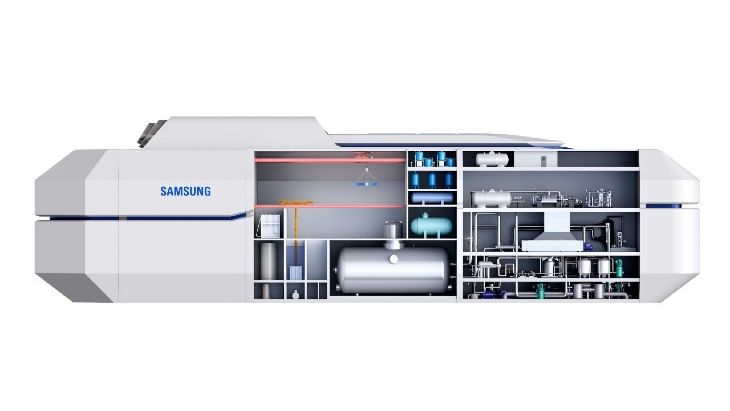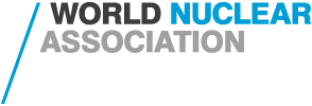The Yucca Mountain waste repository could turn out to be less expensive in the long run than other options for the management of the USA's high-level nuclear waste, a government report has found.
The report, Nuclear Waste Management: Key Attributes, Challenges, and Costs for the Yucca Mountain Repository and Two Potential Alternatives, was prepared by the US Government Accountability Office (GAO) at the request of Nevada senators Harry Reid and John Ensign and California senator Barbara Boxer. Reid and Ensign are both vocal in their opposition to the proposed Yucca Mountain waste repository, while Boxer was instrumental in blocking plans for a nuclear waste site at Ward Valley, California.
The latest report examines the key attributes, challenges and costs of the Yucca Mountain repository and two alternatives for managing the growing US stock of high-level radioactive wastes: storage of the waste at two centralised locations, or continued storage of waste at the site where it was generated. Both of these options would, however, only serve to postpone the day when final geologic disposal would take place.
A final repository for US high-level wastes at Yucca Mountain in Nevada was designed to provide a permanent solution while enabling the US Department of Energy (DoE) to meet its legal obligations to take custody of commercial waste, which it was supposed to do from 1998. Although a formal application to build the repository was submitted to the US Nuclear Regulatory Commission (NRC) in 2008, the US administration earlier this year announced plans to discontinue the project and seek alternatives. Nevertheless, the GAO's analysis of DoE cost projections suggests that if Yucca Mountain was to go ahead, a repository to dispose of some 153,000 metric tons would cost from $41 billion to $67 billion (in 2009 dollars) over a 143-year period until closure.
Costing the alternatives
The second option under consideration in the GAO report, centralised storage at two locations, could be implemented within 10 to 30 years. As well as giving more time to consider final disposal options, this option would also enable nuclear waste to be removed from decommissioned reactor sites and the government to take custody of commercial nuclear waste, potentially saving it billions of dollars in liabilities. However, notes the GAO, this option could be tricky to implement.
The DoE's statutory authority to provide centralized storage is uncertain, and finding a state willing to host a facility could be "extremely challenging". Added to that, it would not provide a final waste disposal solution, so in practice much of the waste would have to be transported twice to reach its final destination. Using cost data gathered from nuclear waste
| "In moving forward, whether the nation commits to the same or a different waste management strategy, federal agencies, industry, and policy makers at all levels of government can benefit from the lessons of Yucca Mountain." |
Finally, the GAO turned its attention to on-site storage, an alternative that it said would require little change from the status quo - without the availability of Yucca Mountain utilities currently face having to store their used fuel on site. Like centralised storage, on-site storage would buy time for the consideration of final disposal options, and with the added benefit of the waste naturally becoming safer to handle over the passage of time, reducing risks when it is finally transported.
However, the GAO warned that the government would be unlikely to take custody of the waste, especially at operating nuclear reactor sites, which could result in significant financial liabilities that would increase over time. The government's failure to take custody of the waste would also potentially intensify public opposition to used fuel storage site renewals and reactor license extensions or even new build plans, particularly with no plan in place for final waste disposition. The on-site storage option came out with the highest potential cost of the three, at $13-34 billion (in 2009 dollars) for the on-site storage of 153,000 metric tons over 100 years, increasing to $20-$97 billion with final geologic disposal.
Valuable experience
The GAO did not make any recommendations in the report, although it noted that both DoE and NRC were in general agreement with its findings. It also did not attempt to make direct comparisons between the three options, citing significant, unquantifiable differences in their inherent characteristics. However, in its concluding comments, the GAO noted that developing a long-term national strategy for dealing with the nation's high-level waste would not be an easy task, with the need to balance many factors while facing political, legal, and regulatory challenges.
In any case, all the options needs must ultimately lead to final disposition, the report noted. "In the case of the Yucca Mountain repository, these challenges have left the nation with nearly three decades of experience," it said. "In moving forward, whether the nation commits to the same or a different waste management strategy, federal agencies, industry, and policy makers at all levels of government can benefit from the lessons of Yucca Mountain."





_63865.jpg)
_18570.jpg)
_16159.jpg)





